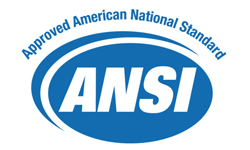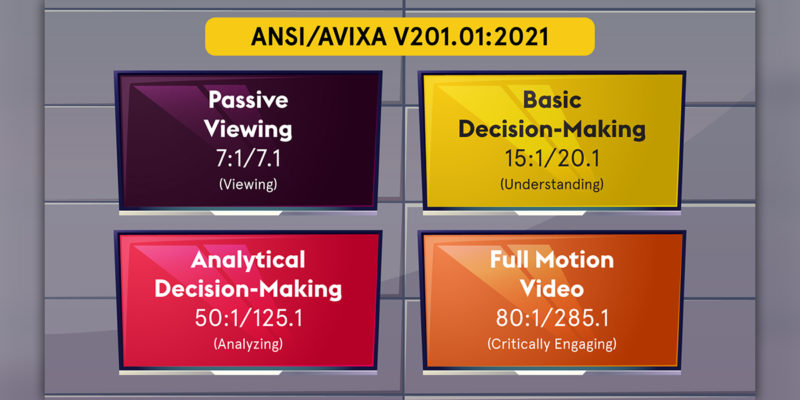InfoComm: Designing for High Contrast: How One University Uses InfoComm’s Projected Image Standard
 This column was reprinted with permission from InfoComm International and originally appeared here.
This column was reprinted with permission from InfoComm International and originally appeared here.
By Brad Grimes
Several years ago, like most people, the art history faculty at George Mason University in Fairfax, Virginia, put aside their slide projectors and embraced the convenience of computer projection. They weren’t thrilled with the results.
“Ever since, they’ve said they’re just not getting the same depth of color as they did with slides, which is true,” said Matthew Silverman, CTS, PMP, Manager of Learning Space Design at George Mason.
So a few years ago, to address their concerns, Silverman’s group encouraged art history professors — on a purely subjective basis — to pick rooms around campus that they thought delivered high enough contrast to meet their projection needs. Their picks were then flagged in the registrar’s database so that when the university scheduled art history classes, they were scheduled for approved, high-contrast rooms. It was an imperfect solution.
Recently, Silverman said he has a new tool at his disposal that will help George Mason University’s art history department — and others on campus — to define objectively its high-contrast requirements: the ANSI/INFOCOMM 3M-2011 Projected Image System Contrast Ratio standard [PDF overview]. “Long-term,” says Silverman, “we want to test and benchmark all our classroom spaces and enter that information into the registrar’s database so that they can schedule art history for any room that meets the requirements, rather than a room that someone walked into and said, ‘I think this is a high-contrast room.’”
The ANSI/INFOCOMM standard, released in June 2011 by InfoComm International, seeks to define acceptable minimum contrast ratios for projected images, relative to their application, for both installed systems and live events. Contrast ratio, as defined in the standard, is a “system” contrast ratio, taking into account not only the projector, but also the projection screen and the impact of ambient light. Silverman, who also serves on InfoComm Standards Steering Committee, is intimate with the standard because George Mason University was one of the testing grounds required by InfoComm’s board of directors before submitting the standard for approval by the American National Standards Institute.
Positive Failure
“I’m a huge believer that we’ve needed standards for a long time,” said Silverman. Therefore, he said, when the standard’s task group needed volunteers to field-test the proposed standard, he accepted the job.
Silverman and Classroom Support Technician Andre Wilson used the Projected Image System Contrast Ratio standard in a single room on campus — and the room failed. “But we knew exactly why,” Silverman said. “It failed because no one had thought about lighting. When we looked at the light on the screen, no one thought about directional lighting or managing the light on the screen. It had nothing to do with anything audiovisual. It wasn’t like the projector wasn’t bright enough or the screen was too large.”
The standard defines four minimum contrast ratios based on the needs of the viewer for a stated purpose: Passive Viewing, Basic Decision Making, Analytical Decision Making, and Full Motion Video. For example, if the room will be used for looking at non-technical PowerPoint presentations, the standard requires a 15:1 contrast ratio. If it’s for analyzing engineering drawings, the standard calls for 50:1.
The standard is easy to implement, requiring little more than a light meter. It steps users through the process from preparing a viewing area plan to measuring and recording luminance values at different viewing locations. The standard also comes with sample viewing area plans, a measurement conformance form, and a form for detailing the tested projection system in order to help identify remediation points in the event a system fails to conform.
At George Mason University, Silverman put the test room viewing needs in the Basic Decision-Making category, or 15:1. And while the tests indicated that the room was certainly usable under most circumstances, Silverman would be the first to say it wasn’t up to industry standards. “From a faculty point of view, any time we can improve the contrast, the brightness, or the quality of their image, they’re happy. From an industry point of view, is it where we should be? Probably not.”
And that’s typical of rooms throughout campus, Silverman explained. With the ANSI-approved standard in hand, George Mason University is in position to improve the quality of all its learning spaces. “We have to benchmark our entire environment and figure out what we can fix easiest,” he said. “In some places, it may be as easy as zoned lighting. In the new buildings, we’ve been vocal about zoned lighting because you can flip off the lights over the screen and double your contrast on the spot.”
As the school receives funds to proceed with new and updated classrooms, Silverman said he plans to hand the standard to lighting designers and require that they provide the proper conditions at the projection screen location.
And he’s helping other groups on campus maximize their projected image experience. Silverman helped George Mason’s College of Science with a requirements document for a new presentation space at the base of the school’s observatory.
“They planned to project space imagery and black was really important to them,” Silverman said. “One of the instructors pointed to a printed poster on the wall and said, ‘If I can‘t get this kind of contrast, then it doesn’t meet my requirements.’”
For the presentation space in question, Silverman and the faculty determined that contrast was one of the top factors in the room’s design. They included the Projected Image System Contrast Ratio standard in the RFP that they shopped around to integrators and decided they were willing to sacrifice system functionality to ensure the contrast ratio was up to snuff — at least 50:1.
“Given that I was working with a bunch of scientists, they really liked that they had a way of saying, ‘OK, this is how we define what correct contrast is,’” Silverman said.
In fact, one of the ANSI/INFOCOMM standard’s greatest strengths is that it provides AV integrators, consultants, and technology managers with an industry-approved method for measuring and describing an often-overlooked variable that can be critical to the optimal viewing of projected imagery. Said Silverman, “We learned a lot about our spaces in the process of testing just one room.”
To obtain a copy of the ANSI/INFOCOMM 3M-2011, Projected Image System Contrast Ratio standard, you may purchase it from the ANSI eStandards Store, along with InfoComm’s other ANSI-approved standards, ANSI/INFOCOMM 1M-2009, Audio Coverage Uniformity in Enclosed Listener Areas, ANSI/INFOCOMM 2M-2010, Standard Guide for Audiovisual Systems Design and Coordination Processes, and the new ANSI/INFOCOMM 4-2012, Audiovisual Systems Energy Management.





